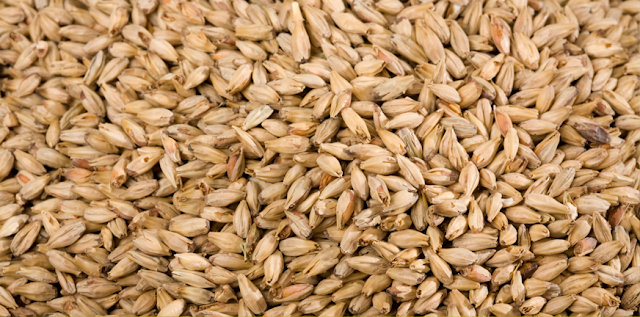Keep ingredients punchy.
Keep oxygen out.
Keep flavor in.
This is how you protect the work you put into every brew day.

Seasoned homebrewers learn fast. Freshness wins. Temperature, oxygen, light, and moisture decide whether your lager crackles or your IPA fades. This guide shows smart storage moves for hops, grain, and yeast.
We will use airtight containers and vacuum sealers, plus battle-tested habits from the brewhouse.
Pair these with your favorite brewing tips and your ingredients will hold their edge longer.
Storage Fundamentals
- Temperature control. Keep ingredients cool and stable. Target 2 to 10°C, 35 to 50°F. Heat and swings speed oxidation and stale flavors.
- Block the light. Hops lose zip under light. So does beer. Use opaque bins or a dark cupboard. More on why light is bad for beer here, what skunking really is.
- Beat moisture. Humidity invites mold and off notes. Store in dry spaces. Seal tight so grain does not wick ambient moisture.

Airtight Containers That Work
Food-grade plastic containers with gasket lids keep air and moisture out. UV-blocking options are great for hops. Lightweight. Durable. Easy to stack.
Glass jars. Mason jars shine for small hop lots and dry yeast. Glass does not absorb odor. Label clearly and stash in the dark.
Metal bins. Stainless canisters for base malt and specialty grain. Make sure the seal is real. Light proof. Critter proof. Shop proof.


Vacuum Sealing For The Win
Vacuum sealers strip headspace oxygen and lock in aroma. They are perfect for hops and milled grain. You can also seal yeasts in secondary bags for travel or short term organization.
Pick a unit. Purchase a vacuum sealer built for home use. Rolls let you size bags for odd portions. Pair with your main vac-seal workflow.
Prep the bag. Cut long enough for a clean seal. Keep the interior dry. Oil or dust on the seal zone will cause leaks.
Fill and seal. Leave a little slack so the bag lies flat. Pull the air, seal, then label with variety and date. Dating is how you rotate stock with confidence.

Quick Targets And Tactics
| Ingredient | Best Container | Temp | Light | Extra Moves |
|---|---|---|---|---|
| Hops, pellets | Vac-sealed mylar or mason jar | Freezer for long hold. Fridge for short | Opaque or dark | Purge with CO₂ if jarring. Label AA% and harvest year |
| Hops, whole cone | Vac-sealed bag | Freezer preferred | Opaque | Compress gently before sealing to protect lupulin |
| Base malt, whole | Tight-lid bin or steel can | Cool and dry | Dark | Use within 6 to 12 months. Keep off concrete floors |
| Specialty malt, whole | Jars or bins | Cool and dry | Dark | Buy small and fresh. Roast notes fade first |
| Milled grain | Vac bag or jar, airtight | Cool and dry | Dark | Mill close to brew day. Use desiccant packs |
| Dry yeast | Foil pouch in jar | Fridge | Dark | Reroll and clip after opening. Rehydrate to confirm activity |
| Liquid yeast | Original pack | Fridge | Dark | Build a starter if over a few weeks old |
Pro Tips That Pay Off
- First in, first out. Rotate stock. Oldest out first. Label everything with date, variety, and weight.
- Desiccants for grain bins. Toss in food safe moisture packs. Replace when the indicator changes color.
- CO₂ purge. If you keg, burp jars and bins with CO₂ before sealing. Oxygen has no place in hop storage.
- Keep pests out. Steel bins shut down moths and rodents. If you use plastic, choose thick walls and real gaskets.
- Mind the light on brew day too. Sunlit garages can warm bins fast. Stage ingredients inside, then carry out.
- Hops for the long haul. Big lots get split into brew day packets. One thaw per packet. Do not thaw and refreeze the same bag all month.
Yeast Care Without Drama
Dry yeast is tough but not invincible. Store cold. Keep sealed. For liquid yeast, watch dates.
Warmer transport shortens life. If in doubt, build a small starter to prove viability before pitching.
Stable temperature and airtight storage help every strain hit its mark on brew day.
Deep Dive: Hop Storage That Preserves Punch
Hops lose alpha acids and essential oils every day they sit warm and exposed to air. Keep pellets and cones in oxygen barrier bags. Mylar and multilayer nylon are better than thin zipper bags.
If you jar, purge with CO₂ before sealing. Freezer storage slows the clock.
Mark each pack with variety, lot number, crop year, and alpha acid percentage so recipes stay accurate month after month.
- Freezer vs fridge. Freezer holds aroma longer. Fridge is fine for short term use under four weeks.
- Avoid frost cycles. Chest freezers hold steadier temperatures than frost free uprights. Less cycling, less condensation, fewer ice crystals inside bags.
- Hop creep awareness. Late and dry hop additions can restart fermentation if your yeast wakes up on residual dextrins. Store dry hops cold and sealed to reduce enzymatic surprises, then plan a diacetyl rest after dry hopping.
Deep Dive: Grain Storage That Stays Crisp
Whole malt resists staling better than crushed malt. Buy base malt in sealed sacks, then move to tight bins the day they arrive. Keep them off concrete floors to dodge moisture wicking.
For specialty malts, purchase smaller quantities and refresh often. Once grain is milled, the clock starts faster due to exposed oils and starches.
Mill close to brew day. If you must mill early, vacuum seal with a desiccant pack and store cool and dark.
- Pest control. Food grade steel cans with clamp lids block grain moths and mice. Add bay leaves or cedar blocks outside the liner to discourage visitors without perfuming the grain.
- Moisture targets. Grain at or under 5 percent moisture stores best. If your space is humid, add larger rechargeable desiccant cans to the bin and regenerate them in a low oven when saturated.
- Sniff test. Fresh malt smells like biscuit, honey, or toast. Stale malt smells flat, papery, or slightly sweet-sour. Trust your nose before it reaches your mash tun.
Deep Dive: Yeast Handling That Protects Viability
Yeast is a living workforce. Treat it like produce, not hardware. Dry yeast tolerates travel and warm days better, but long term life is still measured by cold storage and low oxygen.
Liquid cultures need the fridge and a gentle ride to the brew day.
If the pack is older than six weeks, plan a starter to bring cell counts up and catch any sluggishness before the wort is on the line.
- Opened dry yeast. Fold, tape, and place the pouch in a small mason jar with a desiccant packet. Use within a couple of weeks.
- Harvested yeast. Store slurry in sanitized jars under a bit of sterile beer in the fridge. Label strain, beer OG, and harvest date. Use within two to four weeks, or rinse and build a starter.
- Transport sanity. Moving yeast to a friend’s brew day, use an insulated lunch bag with an ice brick. Keep it upright. Keep it clean.
Inventory Habits That Save Batches
Organization preserves freshness and sanity. Group ingredients by category and by next brew date.
Keep a simple log that lists each item, source, package date, storage location, and open date. Tape a sharpie to the freezer door so labeling never gets skipped.
When you brew, pull only the packs you need and return the rest before the thaw sets in.
- Make brew day kits. Pre weigh hops into individual vac packs by addition time. Label them 60, 20, 10, 0, whirlpool, and dry hop.
- Quarter your bulk buys. Split 1 kg or 1 lb hop bags into four or six small packs. Less oxygen per open. Less waste. Better aroma.
- Color code. Blue tape for cold storage, green tape for dry pantry items, red for open now. Your future self will thank you.
Common Storage Mistakes And How To Fix Them
- Leaving hops in thin zipper bags. Fix by moving to mylar with a proper heat seal and a CO₂ purge. Flavor returns to form on the next batch.
- Storing grain in original torn sacks. Fix by transferring to sealed bins the day you buy them. Add a label with weight and purchase date.
- Letting yeast ride warm in the car. Fix with a small cooler in the boot. Pack an ice brick on hot days.
- Forgetting to date everything. Fix with a five minute labeling ritual after every delivery. It is cheaper than a bad batch.
Adjuncts, Spices, And Fruit
Vanilla beans, cacao nibs, coffee, citrus peel, and fruit purees bring joy, but they age fast. Store spices whole when possible and grind on brew day. Keep coffee beans sealed and frozen, then grind fresh at addition.
For fruit, choose aseptic purees and refrigerate after opening. Label the open date and finish them within a week, or refreeze in measured pouches to match your next recipe.
Climate Tactics For Warm Regions
Hot garages and damp basements are the enemy. Move storage inside the house where temperature swings are calmer.
A small dorm fridge becomes a hop and yeast vault. If power is tight, freeze water bottles and rotate them through an insulated cooler that holds hops and yeast.
For grain, add larger desiccant cans and crack windows for airflow on dry days only.
Yeast Care Without Drama
Dry yeast is tough but not invincible. Store cold. Keep sealed. For liquid yeast, watch dates. Warmer transport shortens life. If in doubt, build a small starter to prove viability before pitching. Stable temperature and airtight storage help every strain hit its mark on brew day.
Wrap Up
Protect your inputs and your beer will pay you back. Use airtight containers. Lean on vacuum sealers for hop packs and milled grain.
Keep it cool, dark, and dry.
Track dates and rotate like a pro.
You will taste the difference in every pour.

Cheers to sharper hops, cleaner malt, and yeast that shows up ready to work.
0 comments:
Post a Comment